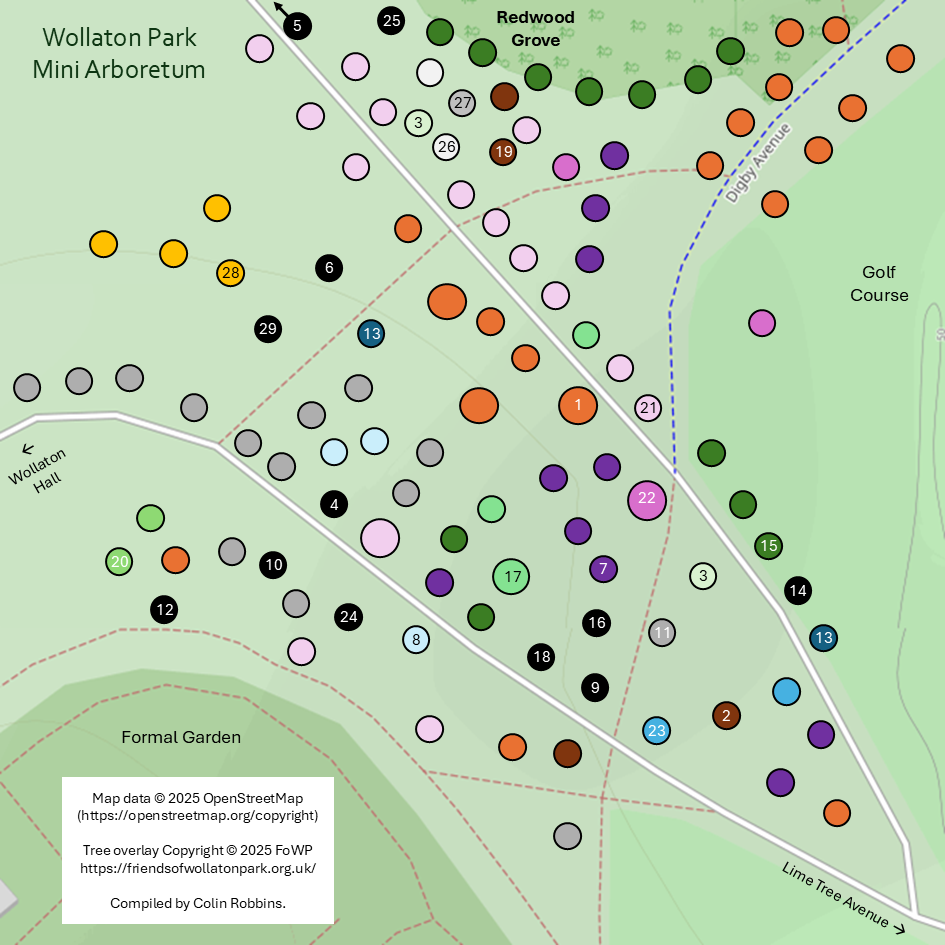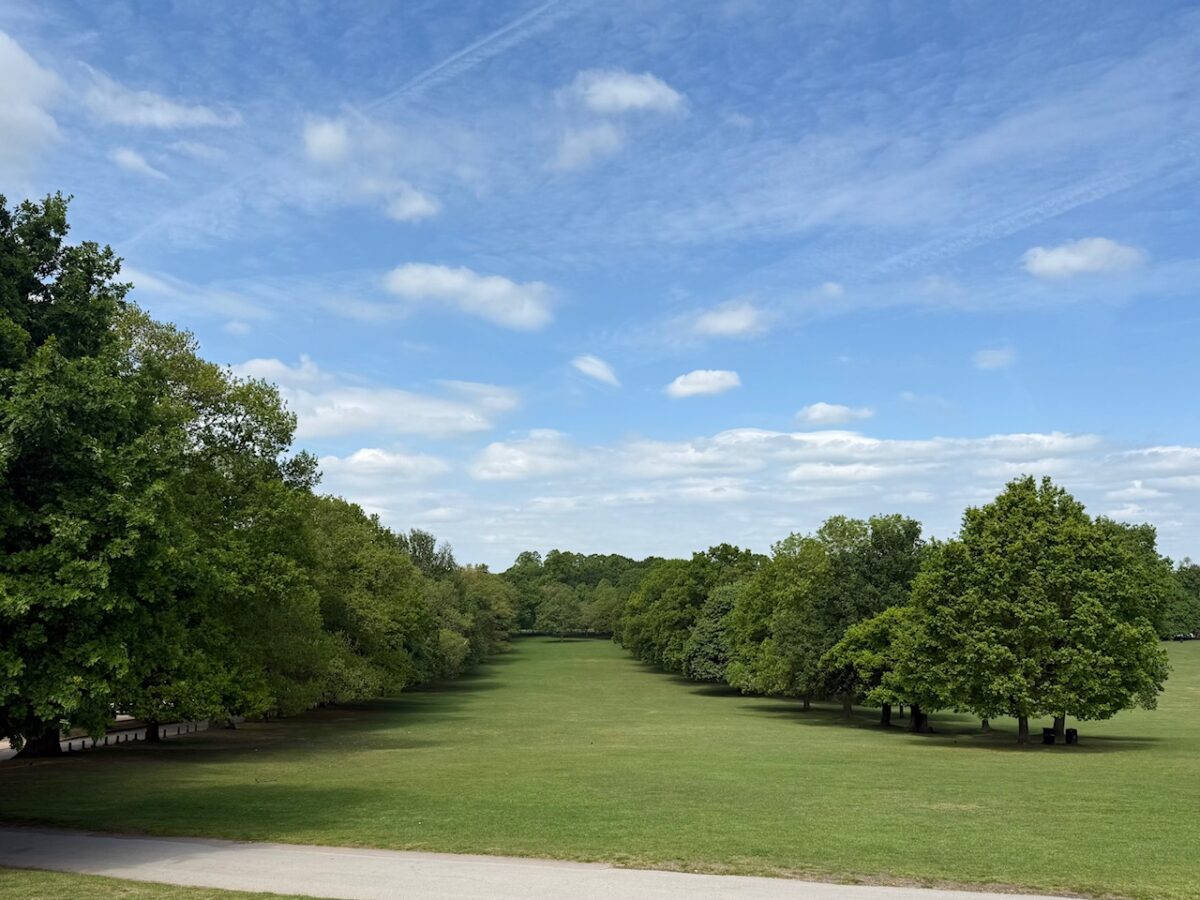Wollaton Hall is surrounded by over 500 acres of parkland, which is home to a diverse collection of more than 6000 trees. Discover the diverse tree species found along our tree-lined avenues, gardens, woods, and arboretum, all documented below.

Tree-Lined Avenues
Wollaton Park boasts 9 historic tree-lined Avenues, dating back to 1664.
These avenues are not just aesthetically pleasing; they are integral to the park’s historical landscape.
Mini-Arboretum
Wollaton Park’s Mini Arboretum boasts a rich history spanning over 300 years. It features a collection of veteran trees, some of which are county champions, alongside a diverse array of trees planted more recently in the late 1970s and 1980s.


Tree Gallery
It is claimed there are 170 species and varieties of trees in the park.
Explore the Friends of Wollaton Park Tree Gallery, which contains photographs and information on over 110 of the tree species found in the park.
Woods
Discover the woods, groves and tree plantations in Wollaton Park.


Tree Leaflets and Walks
Download information about the trees in the park, or follow on of our tree walks…
Arbour Oak

The Arbour Oak on Arbour Hill in Wollaton Park is a magnificent Oak tree with a girth of nearly 7 meters and a spread of 40 meters. It is estimated to be over 550 years old, making it the oldest tree in the park.
- It is a hybrid between an English Oak and Sessile Oak (Quercus x rosacea).
- It is thought to have started life in the 1460s, making it older than Wollaton Hall, which was built in 1588.
- The tree was pollarded in the 17th century, which means that its branches were regularly cut back to encourage new growth.
The following drone shot (taken with permission) shows a healthy crown.
Tree Identification Map.

You can use our online map of all the trees in Wollaton Park to plan your own walk.
- Learn about the different types of trees in the park.
- Find specific trees of interest.
- Plan your walks around the park to take in the best views of the trees.
General Information About Trees…
While trees are plants, some key features set them apart from other members of the plant kingdom:
- Woody Stem: Unlike most plants with soft or herbaceous stems, trees have a single, dominant, woody stem called a trunk. This trunk is strong and supportive, allowing the tree to grow tall and reach sunlight.
- Secondary Growth: Trees undergo secondary growth, meaning they have a special layer of tissue under the bark called the cambium. This layer continuously adds new wood cells, thickening the trunk and allowing the tree to grow wider over time. Most other plants lack this secondary growth.
- Height: Trees are generally much taller than most other plants. This allows them to compete for sunlight by reaching above other vegetation on the ground.
- Lifespan: Trees are perennial plants, meaning they live for many years, sometimes centuries.
Estimates suggest there are over 60,000 tree species in the world. Sadly, deforestation and climate change threaten the biodiversity of these irreplaceable trees. At Friends of Wollaton Park, we support the park staff with conservation activities.
The Woodland Trust and Tree Guide UK have good guides for identifying trees.
The Wollaton Park Golf Course Golf also have documentation on the trees on the golf course.


